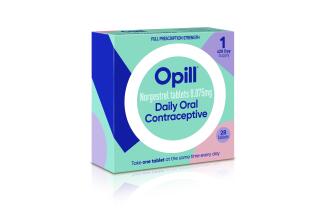Federal Panel Endorses Female Condom : Health: FDA advisory group says device should carry a warning that its effectiveness in preventing pregnancy is uncertain.
- Share via
WASHINGTON — A new condom-like device that could give women better protection against AIDS and other sexually transmitted diseases should be approved for use in the United States, but only if it carries a warning that its effectiveness in preventing pregnancy is uncertain, a federal advisory panel said Thursday.
The Food and Drug Administration’s Obstetrics and Gynecology Devices panel had given the device a “conditional” recommendation early this year, saying that it wanted to see results of an expanded pregnancy rate study before making its final recommendation. At the time, results were available only for a small group of women.
The condition agreed to Thursday addresses concerns by the FDA about whether the female condom is as effective as other barrier methods in preventing pregnancy. The agency must give its final approval before the device can be sold.
Some agency officials were worried that women might switch from a better contraceptive to the new condom, placing themselves at a greater risk of pregnancy.
Those who supported approval, however, argued that the option provided by the device is an important--and potentially life-saving one--for women whose partners refuse to wear condoms.
“There’s been a great deal of debate over this product, but one of the issues that cannot be lost is that for a certain group of women, this is the only option they have to protect themselves from infection with HIV--because it is the only one under the control of the woman,” said Dr. Mervyn F. Silverman, president of the American Foundation for AIDS Research.
The condom, manufactured by Wisconsin Pharmacal Co. of Jackson, Wis., and Chicago, already is being sold in England, Switzerland and Austria.
Company officials insisted Thursday that the device has shown pregnancy protection rates similar to the male condom, contraceptive sponge, cervical cap and diaphragm. They said that more than 1,700 couples have used the device more than 30,000 times in 71 medical centers in 10 countries.
The expanded, six-month study on 200 women that was requested by the FDA panel earlier this year showed a failure rate of 12.2%, including both product and user failure, the company said. When used correctly, a 95% protection rate against pregnancy was achieved, the company said.
But FDA officials told panel members that the failure rate among women studied in Latin America was almost twice that and among certain age groups, more than 30%.
The agency said that the company may have underestimated the failure rate by as much as 10%.
The diaphragm and cervical cap have a failure rate of about 18%, while the male condom has a failure rate of about 12%. The cervical cap and diaphragm, however, offer no protection against sexually transmitted diseases.
Studies of the female condom have shown that the probability of women being exposed to semen inside the vagina because of breakage or other problems with the device was 2.8%, compared to 10.9% with the male condom, the company said.
FDA officials agreed that the device passed all of its strength tests, saying that the condom had been filled with helium and water, shot with lasers and used in rabbits to determine whether the animals suffered any adverse reactions. There were none, the agency said.
FDA researcher Richard Chiacchierini told panel members that, based on tested failure rates, the probability that a woman using the condom could be exposed to a sexually transmitted disease was one in five.
The device has the support of numerous international family planning organizations, women’s health organizations and AIDS groups, including the American Foundation for AIDS Research and the Agency for International Development, which has funded clinical trials of the device.
The condom’s biggest drawback is expected to be its price. One female condom, for a one-time use, is expected to cost about $2.50, compared to about 70 cents for the male condom. The company estimates that an average year’s supply would cost about $180-$190, compared to about $200 or more for birth control pills.
The condom, which will be sold under the name Reality, consists of a loose-fitting lubricated polyurethane sheath and two flexible polyurethane rings. It can be used with additional lubricant, but does not require a spermicide, the company said.






